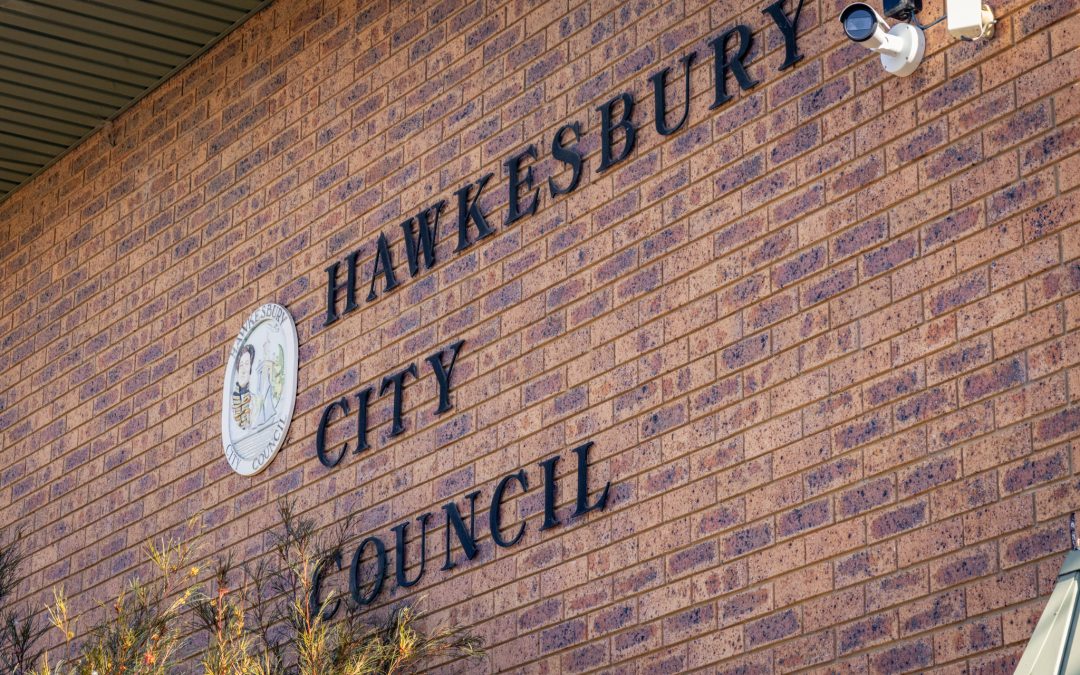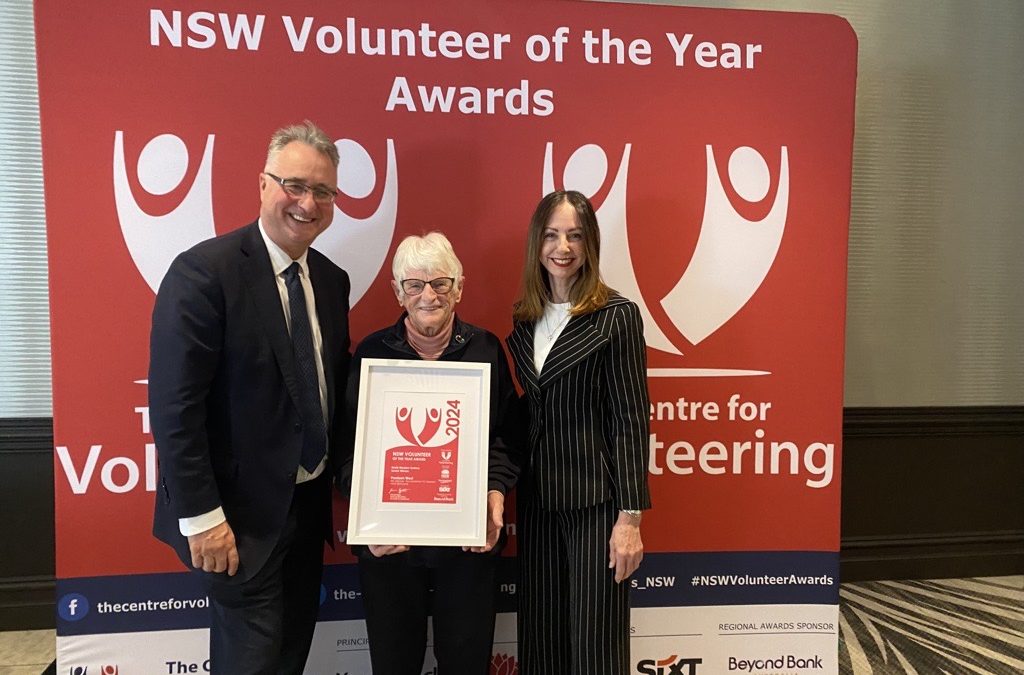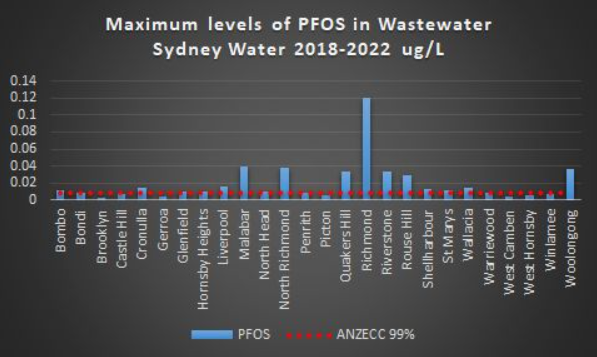Hawkesbury Post contacted all...


Hawkesbury Post contacted all...

In a heartwarming recognition of community...

After more than two decades of dedicated service, the...
Hawkesbury City Council has said it is not responsible for informing residents about cancer-causing “forever” chemicals found at dangerous levels in the North Richmond water supply.
Currently, North Richmond is the only site in Australia undergoing testing for deadly PFAS ( per- and polyfluoroalkyl) synthetic chemicals that have been used widely since the 1950s, including in firefighting foam used for decades at military bases around the country, including Richmond RAAF.
Despite assurances from the Premier, Health Minister, and Chief Medical Officer of New South Wales that the water supply is safe, the National Health and Medical Research Council is reviewing its guidelines for PFAS. This follows recent conclusions from both authorities in the United States and the World Health Organisation that PFAS causes cancer, and there is no safe level. In Australia, PFOA is permitted in tap water at 140 times the maximum level allowed in the US.
“As the provider of drinking water services to Hawkesbury residents, Sydney Water is the appropriate organisation to provide relevant information and education to residents regarding PFAS and the quality of its water,” a spokesperson for Hawkesbury City Council told the Hawkesbury Post.
An investigation by the Sydney Morning Herald published in June found that carcinogenic chemicals – perfluorooctane sulfonate (PFOS) and perfluorooctanoic acid (PFOA) part of the PFAS group are present in drinking water across parts of Sydney, Newcastle, Canberra, Victoria, Queensland, Rottnest Island, and Norfolk Island. This has prompted urgent calls for widespread testing of Australia’s drinking water.
The SMH analysis found dangerous chemicals in the drinking water of up to 1.8 million Australians, including North Richmond. Testing in the past year revealed that North Richmond’s drinking water contained some of the highest levels of PFOA contamination in Australia (5.17 ppt to 9.66 ppt), well above the US limit of 4 ppt. PFOS levels were also high at 1.46 ppt to 3.32 ppt. Australia’s standards fall significantly behind US standards, with the current Australian “safe limit” for PFOS at 70 ppt and 560 ppt for PFOA.
Today, a separate investigation by Friends of the Earth, Australia on PFAS levels in biosolids (wastewater treatment plant products) also found the cancer-causing chemical is too above the safety guidelines. [You can read the report here: https://www.foe.org.au/sydney_water_and_pfas_chemicals] The highest level of PFAS in biosolid sampling sites, by far, was recorded at Richmond. Vineyards was also in the top 10. The report based on information obtained under GIPA (formerly known as Freedom of Information) found that in 2023/2024 almost 86% of monitored treatment plants in NSW reported average PFAS levels above the draft National Environment Management Plan unrestricted use contaminant threshold. 86% of monitored treatment plants reported average PFAS levels above the National Environment Management Plan unrestricted use contaminant threshold. The reason this is important is because Sydney Water sells wet biosolids to farms to mix into the soil, to horticulture industries, parks and gardens. Ultimately the food grown or grazed on this land ends up in our kitchens.

This graph shows the average level of PFAS in biosolids detected in 2023/24. The high levels at Richmond were from the Holding Basin at the plant. [Graph courtesy of Friends of the Earth Australia]

Western Sydney University Associate Professor Ian Wright, a water expert, said the US Environmental Protection Agency has stated there is no safe level for PFOS/PFAS chemicals in drinking water. He explained that these chemicals are resistant to degradation and have been widely used in products like firefighting foams, paints, cosmetics, and non-stick cookware. PFAS contamination in Richmond and Windsor has been linked to the use of firefighting foam at the Richmond RAAF base.
“Humans can readily accumulate PFOS and PFAS chemicals in some of our organs. There is growing evidence that elevated concentrations of these chemicals can be harmful to human health. According to the World Health Organisation, they may be carcinogenic to humans,” Wright told the Hawkesbury Post.
“The United States Environmental Protection Authority revised its guidelines earlier this year, and now it does not recognise a safe level in drinking water. It has also announced that water supplies must be monitored for these chemicals over the next three years and treated to reduce them to much lower concentrations. It will be a massive challenge for the US water industry. It is ambitious, expensive, and will take a long time to achieve,” he added.
Wright highlighted that, according to the SMH report, many would fail if the US guidelines were applied to Australian water supplies, including North Richmond. He noted that Australia has been slow to revise its PFAS guidelines compared to the US, which is considered a world leader in this area.
The Hawkesbury Post has extensively covered the worsening PFAS issue in the region. In August last year, the Department of Defence held a briefing on the chemicals in Richmond, organised by Federal Member for Macquarie Susan Templeman, one of the few Australian and local politicians showing concern about the issue. The Defence Department has known about the dangers of PFAS in its firefighting foams for decades and only stopped using them last decade.
Assistant Defence Minister Matt Thistlethwaite told the Hawkesbury Post at that meeting, that people who owned PFAS-contaminated land should not consume produce from that land. However, he added that the health advice was that it was still safe to sell produce from such lands into the market, and the government has accepted the advice prepared by the Australian Department of Health and the Australian Environmental Protection Authority.
HCC has reiterated that PFAS issues are the responsibility of the Defence Department and has admitted it does not test for PFAS at its own sewerage recycling plant in Windsor, where it produces “grey water” for irrigation.